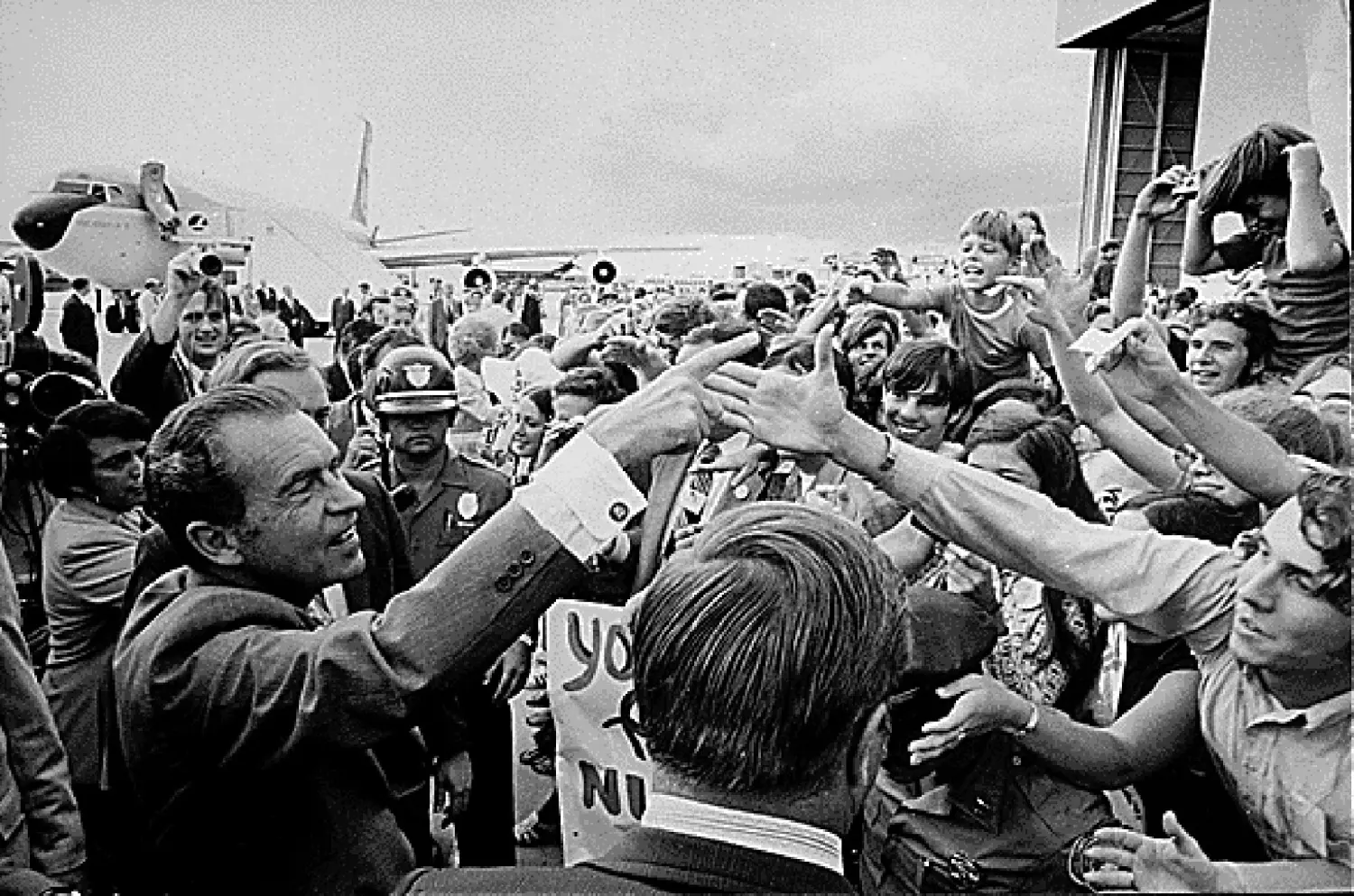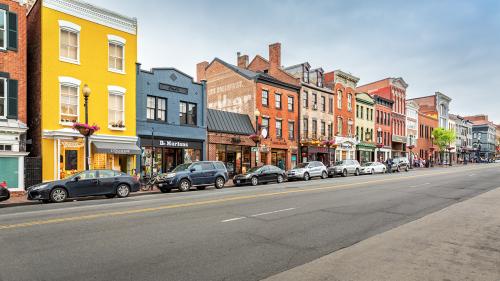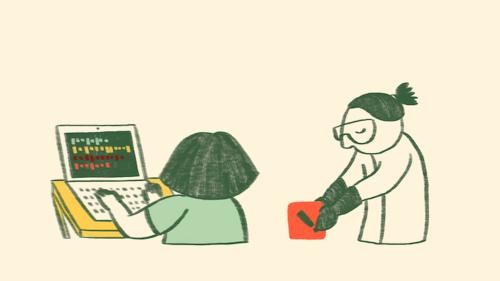Editor’s Note: In “The Nixon Sightings,” Steve Hess recalls five key moments in his time working with Richard M. Nixon. Each vignette offers a peek into some of the events that drove a young Senator from California to the Oval Office. This series was written as background to Hess’ new book
The Professor and The President: Daniel Patrick Moynihan in the Nixon White House
(Brookings Press, December 2014), a “dramatic narrative” of events in 1969-1970, told in the present tense.
Every year around Lincoln’s birthday Republican leaders spread out around the country to deliver inspiration at local party fund-raisers. In 1965 Nixon would to go forth on this annual trek in a notorious plane that I had located for him.
This happened because Lockheed was to take me to its manufacturing plant in Marietta, Georgia, on a writing assignment. When my plane arrives in Washington, Hubert Humphrey gets off. If Lockheed gives courtesy flights to a Democratic Vice President, I reason, surely it would offer the same service to a Republican Vice President. Lockheed agrees.
I asked Nixon if I could bum a ride. Also on the trip was John Whitaker, a geologist, whose hobby was being useful to Nixon. The trip was standard and uneventful for Nixon, except that we were riding in the luxury of the plane that “Pussy Galore” piloted in Goldfinger, the greatest of the James Bond movies.
When we stopped for refueling in Buffalo, Nixon asked me to walk with him on the tarmac. Returning to the plane I told John, “RN asked me to work for him full time in New York and I declined.” The offer was flattering, but I had saved enough money to devote myself to writing books for a while, America’s Political Dynasties would be finished soon, I was even working on a history of American political cartoons, and another, with Dave Broder, on the Republican Party.
“This is going to change your relationship with him,” John said. I was surprised.
“What do you mean?” Nixon and I had worked closely and I think skillfully since 1961 on articles and speeches.
“You said no to him.” John understood Nixon better than I. At that moment on the tarmac in Buffalo I dropped out of Nixon’s inner circle.
It would take time for me to absorb the absence of not being close to Nixon. It’s fun having a celebrity friend. I would miss little things like the eyes turning to our table in a restaurant, trying not to stare, wondering who that man is with Nixon, the chef sending over dishes that are not on the menu. It’s exciting being in the inner circle, keeping secrets. The six of us invited to the Waldorf to advise on whether or not he should run for governor of California. (The consensus is Yes; though when he runs and loses, some said they voted No.) Or being alone with him and Rose Mary Woods in an Oakland hotel room, 16 days before the 1962 election, watching President Kennedy announce that the Soviet Union has deployed missiles in Cuba. He turns to me, “It’s over. I just lost the election.” He reasons that this is like a guillotine coming down on his momentum. (He loses, but probably would have anyway. What we never understood, until it was too late, was that Pat Brown was a very good governor.)
There is still friendship. He even appoints me to several positions with long titles when he becomes president. But it will never be the same as when he reached out to me and I said no.
My Buffalo decision also affected another person, although I doubt he is aware of it. At that time a young editorial page writer on the St. Louis Globe Democrat was bombarding Nixon with clippings and entreaties on why he should be hired. Pat Buchanan was given the job I had just turned down. I sometimes wonder what would have become of Buchanan if I had accepted Nixon’s offer.
The Brookings Institution is committed to quality, independence, and impact.
We are supported by a diverse array of funders. In line with our values and policies, each Brookings publication represents the sole views of its author(s).





Commentary
The Nixon Sightings, Part IV: Lincoln Week 1965
December 18, 2014